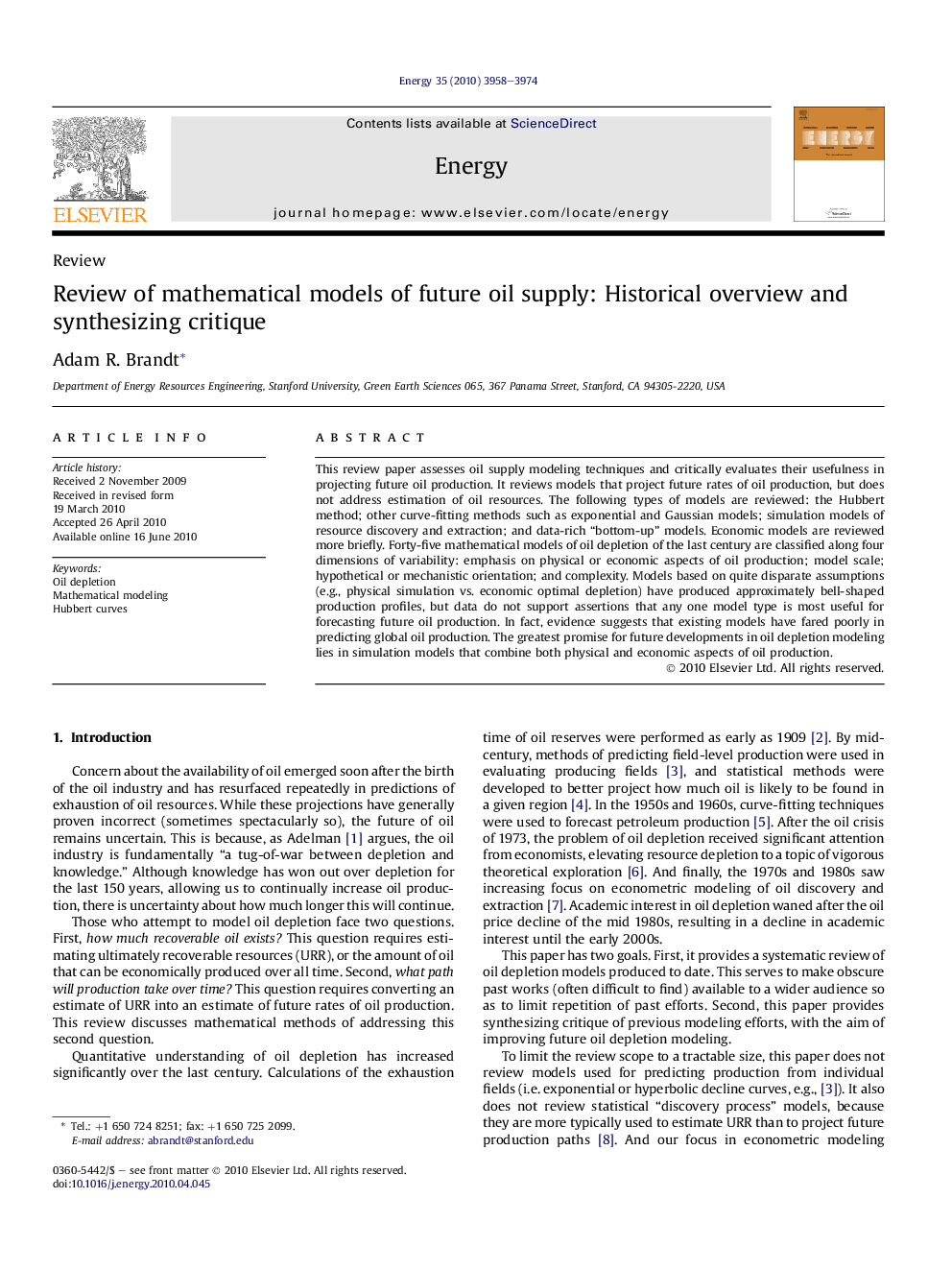| Article ID | Journal | Published Year | Pages | File Type |
|---|---|---|---|---|
| 1734971 | Energy | 2010 | 17 Pages |
This review paper assesses oil supply modeling techniques and critically evaluates their usefulness in projecting future oil production. It reviews models that project future rates of oil production, but does not address estimation of oil resources. The following types of models are reviewed: the Hubbert method; other curve-fitting methods such as exponential and Gaussian models; simulation models of resource discovery and extraction; and data-rich “bottom-up” models. Economic models are reviewed more briefly. Forty-five mathematical models of oil depletion of the last century are classified along four dimensions of variability: emphasis on physical or economic aspects of oil production; model scale; hypothetical or mechanistic orientation; and complexity. Models based on quite disparate assumptions (e.g., physical simulation vs. economic optimal depletion) have produced approximately bell-shaped production profiles, but data do not support assertions that any one model type is most useful for forecasting future oil production. In fact, evidence suggests that existing models have fared poorly in predicting global oil production. The greatest promise for future developments in oil depletion modeling lies in simulation models that combine both physical and economic aspects of oil production.
